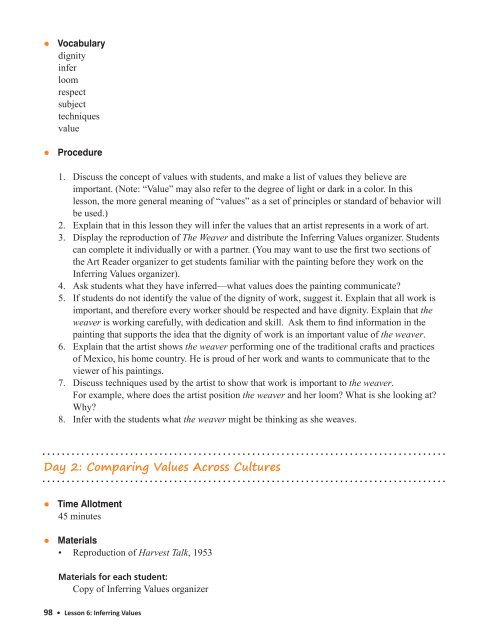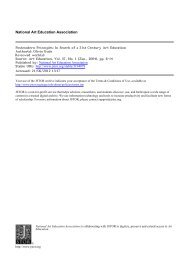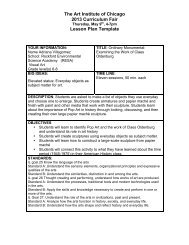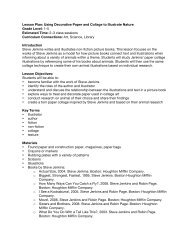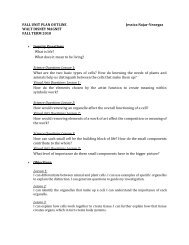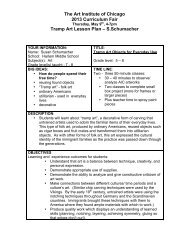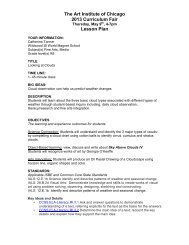Lesson 1 - LearningThroughMuseums
Lesson 1 - LearningThroughMuseums
Lesson 1 - LearningThroughMuseums
You also want an ePaper? Increase the reach of your titles
YUMPU automatically turns print PDFs into web optimized ePapers that Google loves.
● Vocabulary<br />
dignity<br />
infer<br />
loom<br />
respect<br />
subject<br />
techniques<br />
value<br />
● Procedure<br />
1. Discuss the concept of values with students, and make a list of values they believe are<br />
important. (Note: “Value” may also refer to the degree of light or dark in a color. In this<br />
lesson, the more general meaning of “values” as a set of principles or standard of behavior will<br />
be used.)<br />
2. Explain that in this lesson they will infer the values that an artist represents in a work of art.<br />
3. Display the reproduction of The Weaver and distribute the Inferring Values organizer. Students<br />
can complete it individually or with a partner. (You may want to use the first two sections of<br />
the Art Reader organizer to get students familiar with the painting before they work on the<br />
Inferring Values organizer).<br />
4. Ask students what they have inferred—what values does the painting communicate?<br />
5. If students do not identify the value of the dignity of work, suggest it. Explain that all work is<br />
important, and therefore every worker should be respected and have dignity. Explain that the<br />
weaver is working carefully, with dedication and skill. Ask them to find information in the<br />
painting that supports the idea that the dignity of work is an important value of the weaver.<br />
6. Explain that the artist shows the weaver performing one of the traditional crafts and practices<br />
of Mexico, his home country. He is proud of her work and wants to communicate that to the<br />
viewer of his paintings.<br />
7. Discuss techniques used by the artist to show that work is important to the weaver.<br />
For example, where does the artist position the weaver and her loom? What is she looking at?<br />
Why?<br />
8. Infer with the students what the weaver might be thinking as she weaves.<br />
Day 2: Comparing Values Across Cultures<br />
● Time Allotment<br />
45 minutes<br />
● Materials<br />
• Reproduction of Harvest Talk, 1953<br />
Materials for each student:<br />
Copy of Inferring Values organizer<br />
98 • <strong>Lesson</strong> 6: Inferring Values


